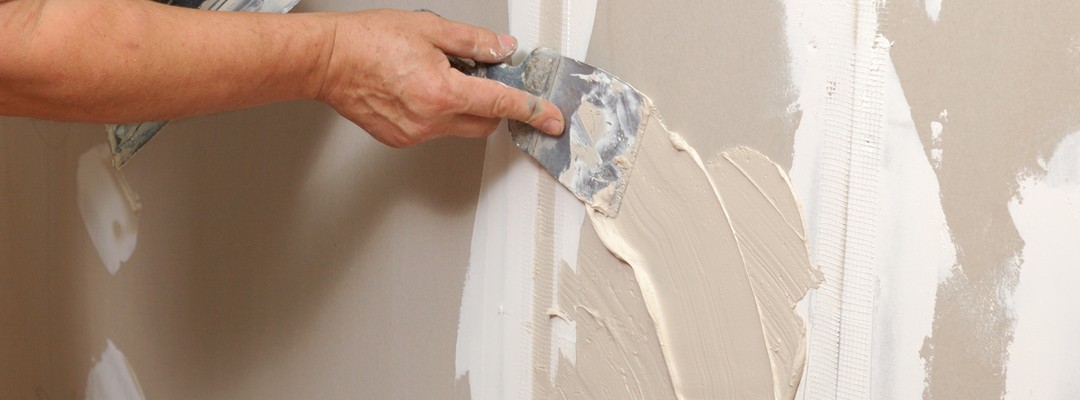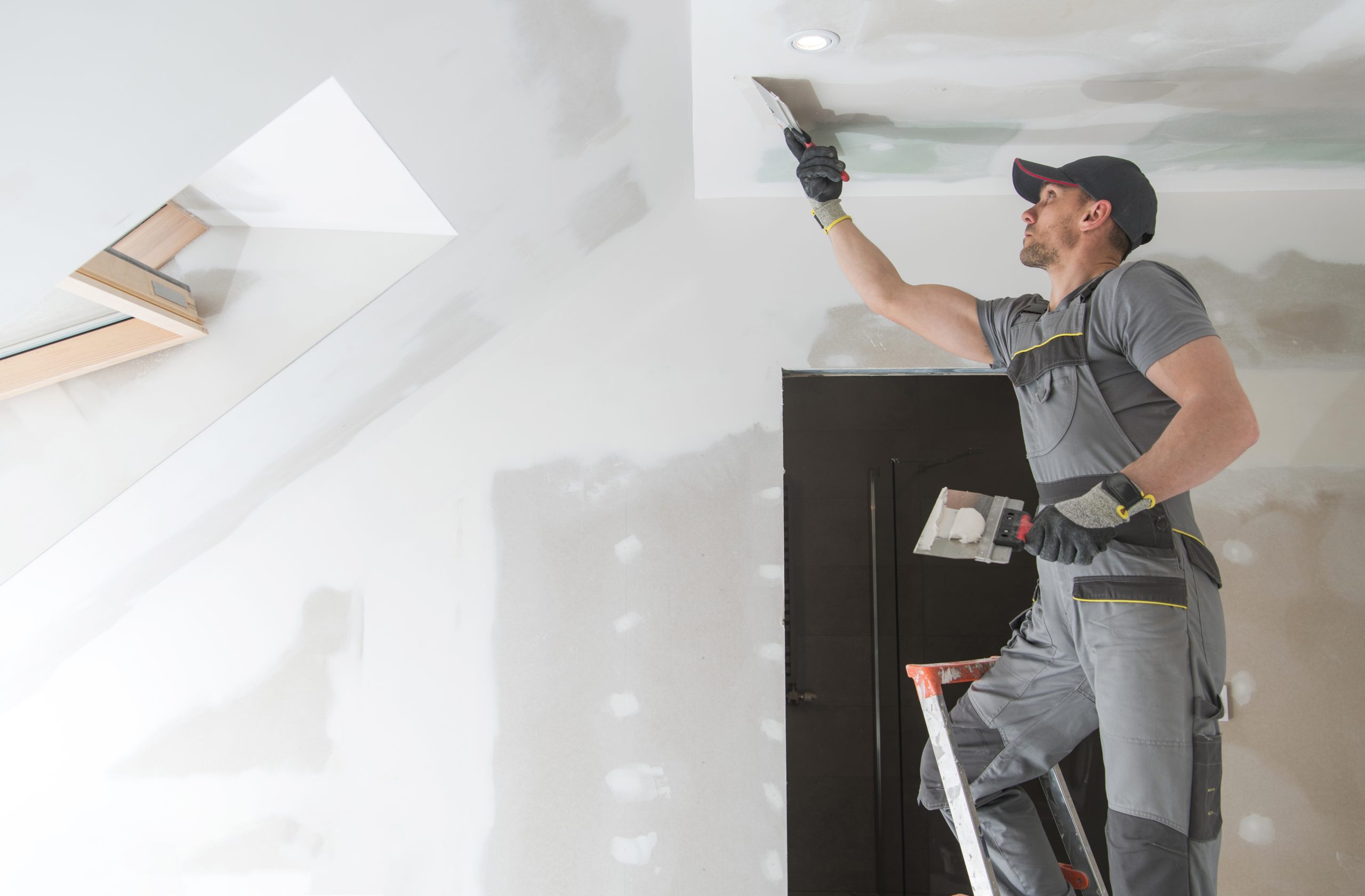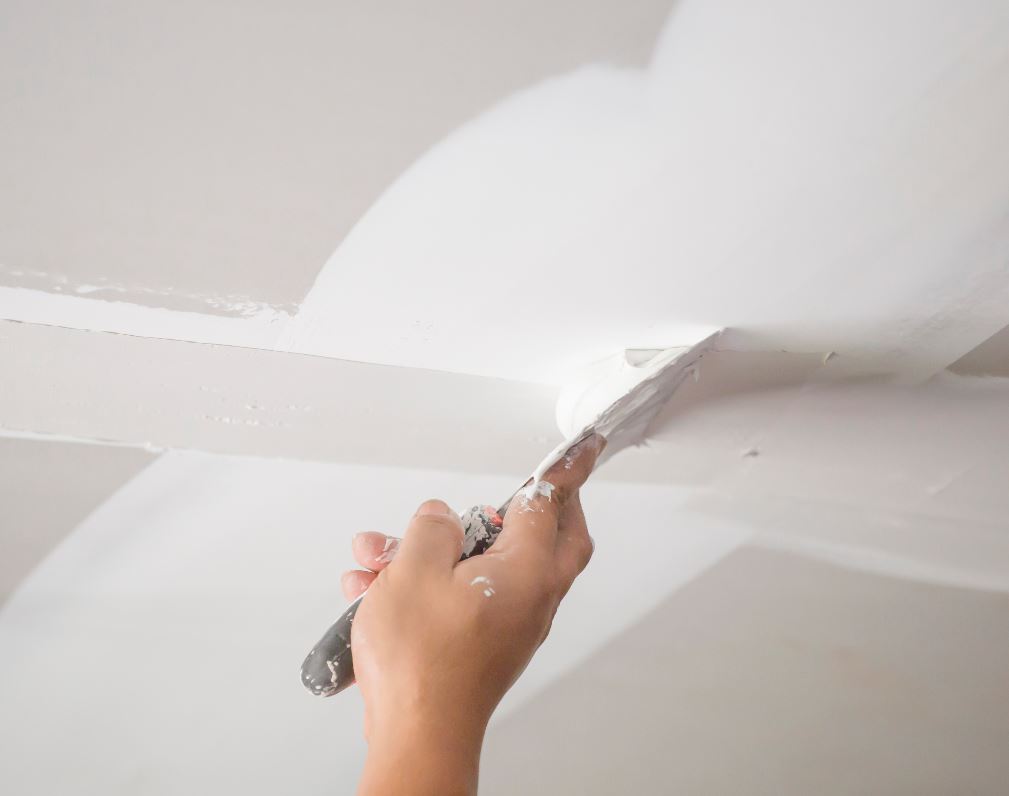Discover the Best Practices for Successful Drywall Repair and Installment
The art of drywall fixing and setup needs a blend of ability and precision. Understanding the necessary tools is important for attaining a seamless coating. Understanding the step-by-step procedure can make a considerable distinction in the result. Appropriate strategies for mudding and taping are additionally important. What stays is the understanding of maintenance that guarantees long life. These aspects with each other produce a sleek end result worth exploring better.

Vital Devices for Drywall Repair Work and Setup
When undertaking drywall repair and installment, having the right devices can greatly boost the performance and high quality of the work. An utility blade is essential for reducing drywall sheets specifically, while a drywall saw can help in making more intricate cuts. Taping knives, available in numerous sizes, are vital for using joint substance efficiently and uniformly. A drywall sander, ideally with a dirt collection attribute, aids attain a polished coating, minimizing the requirement for substantial clean-up.
In addition, a gauging tape assurances precise dimensions, and a level ensures that installations are straight and plumb. Safety and security equipment, including dust masks and goggles, ought to not be neglected to safeguard against particles and dirt. A stud finder help in situating framing participants, ensuring protected setup. By equipping oneself with these essential tools, the repair service and installation process comes to be extra workable and causes a professional-quality outcome.

Step-by-Step Guide to Patching Holes
Covering holes in drywall calls for a methodical technique to ensure a seamless repair work. Initially, the area around the opening must be cleaned and any kind of loose debris eliminated. For tiny holes, a putty knife can be made use of to apply a lightweight spackle, pressing it right into the opening and smoothing the surface area. After it dries out, sanding is necessary to produce a flat surface. For bigger openings, a spot of drywall may be needed. This includes cutting a piece of drywall somewhat larger than the hole, safeguarding it to the wall with screws, and utilizing joint substance to cover the joints. Once the compound dries out, it needs to be sanded smooth. Lastly, priming the patched area prior to paint will ensure an even surface. Following these actions will lead to a professional-looking repair work that blends effortlessly with the surrounding wall surface.
Techniques for Smooth Drywall Installment
Accomplishing smooth drywall installment demands careful planning and implementation. Initially, it is necessary to determine and reduce drywall sheets precisely to minimize spaces. Making use of an energy blade, installers ought to score the board prior to snapping it along the cut line, guaranteeing clean sides. Appropriately lining up the sheets is essential; beginning from the leading and functioning down aids preserve harmony.
Fastening drywall to the studs needs constant spacing, typically every 16 inches, making use of screws as opposed to nails for better hold. This method reduces the danger of pops in time. In addition, startling the joints in between sheets improves structural stability and minimizes the visibility of joints.
Making use of the best density of drywall for details locations-- such as moisture-resistant types in restrooms-- additional contributes to a remarkable surface. Adhering to these methods will certainly result in a professional-looking and smooth setup, establishing the stage for the subsequent ending up processes.
Finishing Touches: Taping and Mudding
Finishing touches, such as mudding and taping, play an important duty in achieving a refined drywall surface. Taping entails applying a slim strip of drywall tape over the seams and joints, guaranteeing a seamless look. This process assists stop fractures and creates a strong bond in between drywall sheets. It is important to select the best kind of tape, with paper and fiberglass fit together being the most typical options.
Mudding, or applying joint substance, adheres to taping. This compound fills out gaps and ravel the surface for a consistent surface. It is commonly used in multiple layers, with each layer needing to dry prior to fining sand. Correct method involves feathering the sides to mix the compound into the bordering drywall, reducing visibility.
When finished correctly, taping and mudding boost both the aesthetic and architectural integrity of the drywall installation, leading to a professional-quality coating.
Tips for Maintaining Your Drywall After Setup

Furthermore, preserving a regular indoor moisture level can protect against warping or mold growth. Making use of a dehumidifier in damp locations, like cellars, is a good idea. It's additionally beneficial to occasionally paint areas that show wear, as this shields the underlying material. When relocating furnishings or mounting fixtures, caution must be exercised to prevent harming the drywall. By adhering to these maintenance tips, house owners can expand the life of their drywall, securing it continues to be an appealing function of their interiors.
Regularly Asked Concerns
What Security Equipment Is Required for Drywall Repair Work and Installment?
For drywall fixing and setup, crucial safety equipment consists of safety goggles to safeguard eyes, dirt masks to protect against breathing of particles, handwear covers for hand protection, and knee pads for convenience throughout prolonged kneeling. Interior Painting.
Just how Do I Determine the Drywall Density Needed for My Job?
To figure out the drywall density needed for a job, one need to think about the wall surface's structural demands, regional building regulations, and the intended use the room, usually choosing 1/2-inch or 5/8-inch drywall.
Can I Fix Drywall Without Removing Furniture From the Space?
Yes, drywall can be repaired without eliminating furnishings from the space. Careful preparation and protective measures can minimize mess, permitting effective repair work while keeping surrounding products secure from dust and damage during the procedure.
What Sorts of Drywall Are Ideal for Different Settings?
Moisture-resistant drywall is optimal for kitchens and restrooms, while soundproof drywall suits shared walls in houses. Fire-rated drywall is best for garages, and basic drywall works well in basic living areas, making certain toughness and suitability for different settings.
How much time Does It Consider Drywall Mud to Dry Entirely?
Drywall mud generally takes 24 to 2 days to completely dry totally, relying on aspects like moisture and temperature level (drywall contractor). Thicker applications might call for longer drying times, while thinner layers can dry faster. Appropriate air flow help drying out
The art of drywall repair and setup requires a mix of ability and precision. When taking on drywall repair and setup, having the right devices can considerably enhance the effectiveness and quality of the job. An energy knife is vital for reducing drywall sheets resource specifically, while a drywall saw can aid in making extra detailed cuts. Attaining seamless drywall installation demands careful planning and execution. Moisture-resistant drywall is perfect for bathrooms and kitchens, while soundproof drywall suits shared walls in houses.